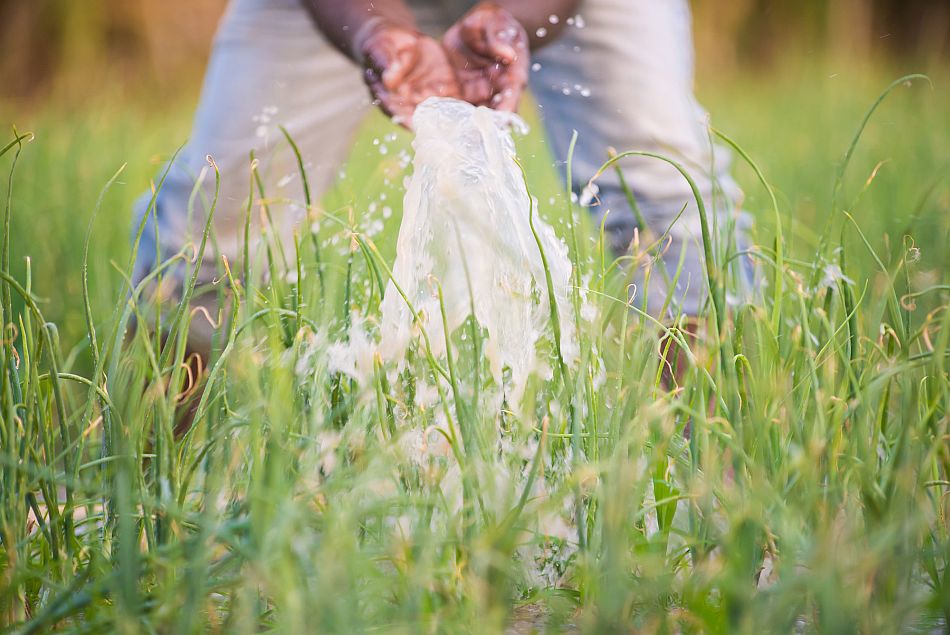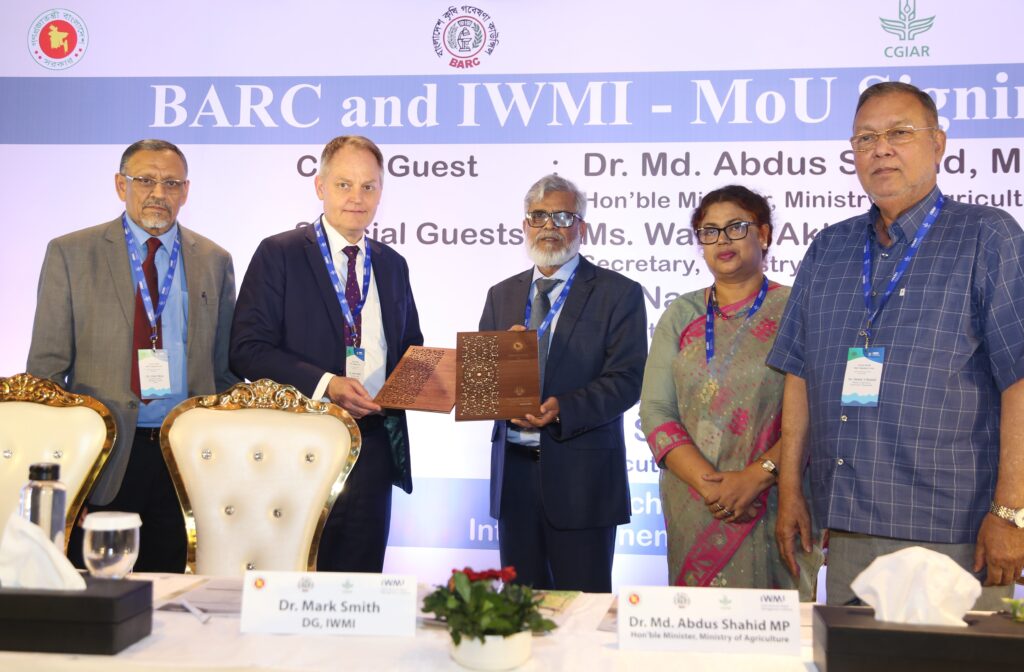By Mark Smith, Director General, International Water Management Institute (IWMI)
This is the first part of a two-part blog to examine how water systems science will contribute to achieving the mission of a reformed CGIAR.

‘One CGIAR’ is an ambitious transformation of the organization that builds on a fifty-year legacy of shaping global agricultural development. It aligns CGIAR behind a new and broader mission that is critical to the sustainable development challenges of today: to deliver science and innovation that advance the transformation of food, land and water systems in a climate crisis.
One CGIAR will focus on innovations from genetics to entire food production systems, and on policies and strategies to transform trajectories for sustainable development. And critically, innovations that can be deployed faster, at a larger scale, and with greater impact, where they are needed the most.
CGIAR and its partners will deliver ways to grow, catch, trade, and consume healthy and nutritious food. But also the means to manage landscapes and water systems that are inclusive, more equal and resilient. Ultimately a unified CGIAR will help the world to live within planetary boundaries, stop the loss of biodiversity and maintain a safe climate.
CGIAR’s new ambitions are defined by a set of impact areas, with water – and therefore water systems science – at the heart of each:
- Nutrition, Health and Food Security
- Poverty Reduction, Livelihoods and Jobs
- Gender Equality, Youth and Social Inclusion
- Climate Adaptation and Greenhouse Gas Reduction
- Environmental Health and Biodiversity
Over the next few months we will publish a series of blogs that will explore the linkages between water and each of these impact areas. However, before getting into the details, it is worth stepping back and recapping some ‘first principles’ or ‘fundamental truths’ about water.
To start with, no water = no food. Water is a non-substitutable input to crop and animal production. While urban vertical gardens and hydroponic farmers are producing food without land, no-one is producing food without water. Water also underpins the ecosystem services that provide naturally occurring food and nutrition, such as fish and forest products, and influences human health in ways that enable nutritional uptake. When space agencies search for life on other planets they search for signs of water: no water = no life.
However, water is a finite resource in a world where we tend to think about ‘more’. More income, more food, more energy, more housing, more jobs, etc. Thus, with water, we need to think in terms of managing trade-offs and making the best of what we have. Earth is blessed with large amounts of water, but only around 2.5% of that is freshwater, and an even smaller percentage is practically available. There is certainly space for further developing the water resources we have, particularly in places where this has not been done already, but even this is best done while thinking about the trade-offs involved. The key point here is that we need to think differently about finite goods: we can’t always get more water, but we probably can get more from our water.
Water scarcity is growing. While water is finite, demand for it grows along with population, the water intensity of diets, and the broader water demands of the economy. The result is growing water stress or scarcity in many parts of the world, and therefore growing need for smarter water resource management. Given growing demand and static supply, most countries need to manage their water better to simply stand still. To develop sustainably they need to manage water much better. Beyond trying to limit growth in demand and augmenting supply, there are several approaches worth reflecting on in today’s world:
- Making deliberate and deliberative trade-offs. Where water is scarce, balancing supply and demand is critical. Doing this well is the core challenge of water resource management and will usually require decisions about water allocation – reconciling competing social, environmental, and economic interests, including across time and space. Effective water allocation is built on a combination of clear policy, credible institutional mechanisms, and good data. This is easier said than done. The alternative – or ‘business as usual’ in many undermanaged contexts – is that water is extracted by those with the location or resources to do so without regard for the consequences elsewhere in the system. This can unfairly favour people with the most money and/or the biggest pumps, but also the people who live upstream, or above shallow groundwater.
- Produce more food with less water. On average countries use around 70% of their water for agriculture, 20% for industry, and 10% for household use. Some less developed countries use closer to 90% of water for agriculture, and as their economies develop, many will likely need to simultaneously improve their food security and reduce the amount of water they use for it. Recognizing that growing food can impose trade-offs – deliberate or not – on other parts of the economy through water use is important and will need to be a key element of One CGIAR system thinking in the future, especially in water-scarce environments.
- Water reuse and recycling are low-hanging fruit. Water reuse depends on its quality being fit for purpose. While some places use technically demanding ‘toilet to tap’ approaches, others re-use water for aquifer recharge, agriculture, or industry with correspondingly different levels of treatment. Water reuse and its broader ‘circular economy’ context are likely to be increasingly important and economic elements of future food systems, including being an important element of climate resilience strategies, since recycled water may be relatively more reliable as ‘new’ water becomes more variable in the face of climate change.
The finite nature of water resources is a key driver of the need for improved water resource management but is relatively intuitive: scarce public goods require effective management. But there are other aspects of water resource management that become less intuitive, particularly in comparison to land, forestry, or other types of landscape management. The problem is that water moves, actions at one time or place affect water in another. This is a problem that we will discuss in the next part of this blog.
Over the next few months IWMI will publish a series of blogs that will explore the key linkages between water and each of the new CGIAR impact areas. In doing so we aim to summarize some of what is already known, as well as to identify some of the key knowledge gaps for water systems that CGIAR and the international research community more broadly – hope to fill in the coming years.
















